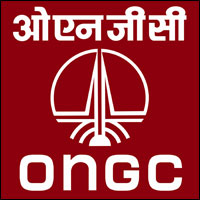ONGC may be one of the blue chip companies on the bourses earning billions of dollars of profit every year. It may be one of the Maharatna PSUs which is often used by the cash starved government to fill in its coffer either by way of disinvestment or extra dividend payment. It may be a darling of investors who have invested heavily into the stock thinking that rising oil price and depreciating rupee will boost its bottomline. But all these high points may soon vanish if some basic issues raised by the company are not addressed immediately by the government. If the government turns blind eye to its grievances, ONGC too may follow the path of Air India and BSNL and start bleeding red soon.
ONGC has been vociferously arguing with the government that the under-recovery burden of the upstream companies be moderated otherwise the current subsidy-sharing mechanism will leave its nominated blocks unprofitable. According to ONGC, its net price realization has gone down from $54.72/bbl in 2011-12 to $47.85/bbl in 2012-13 further dropping to $40.17/bbl in the first quarter of 2013-14. It should be noted that ONGC’s actual cost of production during FY 2013 of crude oil from nominated blocks was $40/bbl without taking into account their return on investment. Thus, the present subsidy-sharing mechanism leaves the E&P behemoth in a precarious condition.
The situation started turning from bad to worse in 2011-12 when the burden sharing mechanism was modified and it was decided that ONGC and OIL will have to pay $56/bbl. Things didn’t stop here and to its utter dismay ONGC’s effective contribution went up further to $63/bbl of crude oil sold on account of inclusion of gas condensate in crude production for determining the contribution. No wonder Planning Commission’s Deputy Chairman Montek Singh Ahluwalia recently went on record saying “It makes sense for ONGC to invest abroad.” According to Ahluwalia for ONGC it is better to invest in oil assets abroad and then import crude oil to India as it will get realization of $110 per barrel of crude oil.
ONGC has chalked out a massive capex plan for the 12th Five Year Plan involving a domestic investment of Rs 1,63,000 crore which the company may find hard to implement unless there is some drastic change in the subsidy burden sharing system. ONGC has also planned an investment of Rs.78,000 crore on carrying out exploratory activities in the six focus basins over the next five years. In addition to this, the company is planning to make sizeable investment in acquiring hydrocarbon assets abroad. All these plans may go haywire if the government persists with present system of subsidy burden sharing.
|
Under recoveries over the years (in crore rupees)
|
||||
|
Year
|
Total under recoveries
|
Government’s share
|
Amount borne by upstream companies
|
Amount absorbed by OMCs
|
| 2003-04 |
9,274
|
–
|
3,123
|
6,151
|
| 2004-05 |
20,146
|
–
|
5,947
|
14,199
|
| 2005-06 |
40,000
|
11,500
|
14,000
|
14,500
|
| 2006-07 |
49,387
|
24,121
|
20,507
|
4,759
|
| 2007-08 |
77,123
|
35,290
|
25,708
|
16,125
|
| 2008-09 |
103,292
|
71,292
|
32,000
|
–
|
| 2009-10 |
46,051
|
26,000
|
14,430
|
5,621
|
| 2010-11 |
78,190
|
41,000
|
30,297
|
6,893
|
| 2011-12 |
138,541
|
83,500
|
55,000
|
41
|
| 2012-13 |
161,029
|
101,000
|
60,000
|
29
|
ONGC feels that Mumbai High (MH) Redevelopment Phase-III will become unviable at the existing level of net price realization. It should be noted that MH North Redevelopment plan has a break-even oil price of USD 63.3/bbl with incremental production of about 5.23 MMT crude oil. MH South Redevelopment plan indicates breakeven oil price of USD 76.3/bbl with incremental production of about 12 MMT crude oil.
ONGC in a missive to the Petroleum Ministry recently has said that a remunerative retention price would help upstream companies generate sufficient funds to accelerate exploration and production activities both within the country as well as overseas and thereby ensuring energy security for the country. According to ONGC if the current trend continues, its entire oil production from nominated blocks, which accounts for more than 80 percent of its total production, will become unprofitable.
It is pertinent to note that whatever sum upstream companies have contributed to fill in the gap in under-recoveries would have been used by them either in domestic oil exploration and production activities or would have been invested in acquiring oil assets abroad. But that amount has now been used for petroleum products consumption. The government has indirectly promoted consumption at cost of developing/acquiring new oil fields. It is high time the government fixes up its priorities.











